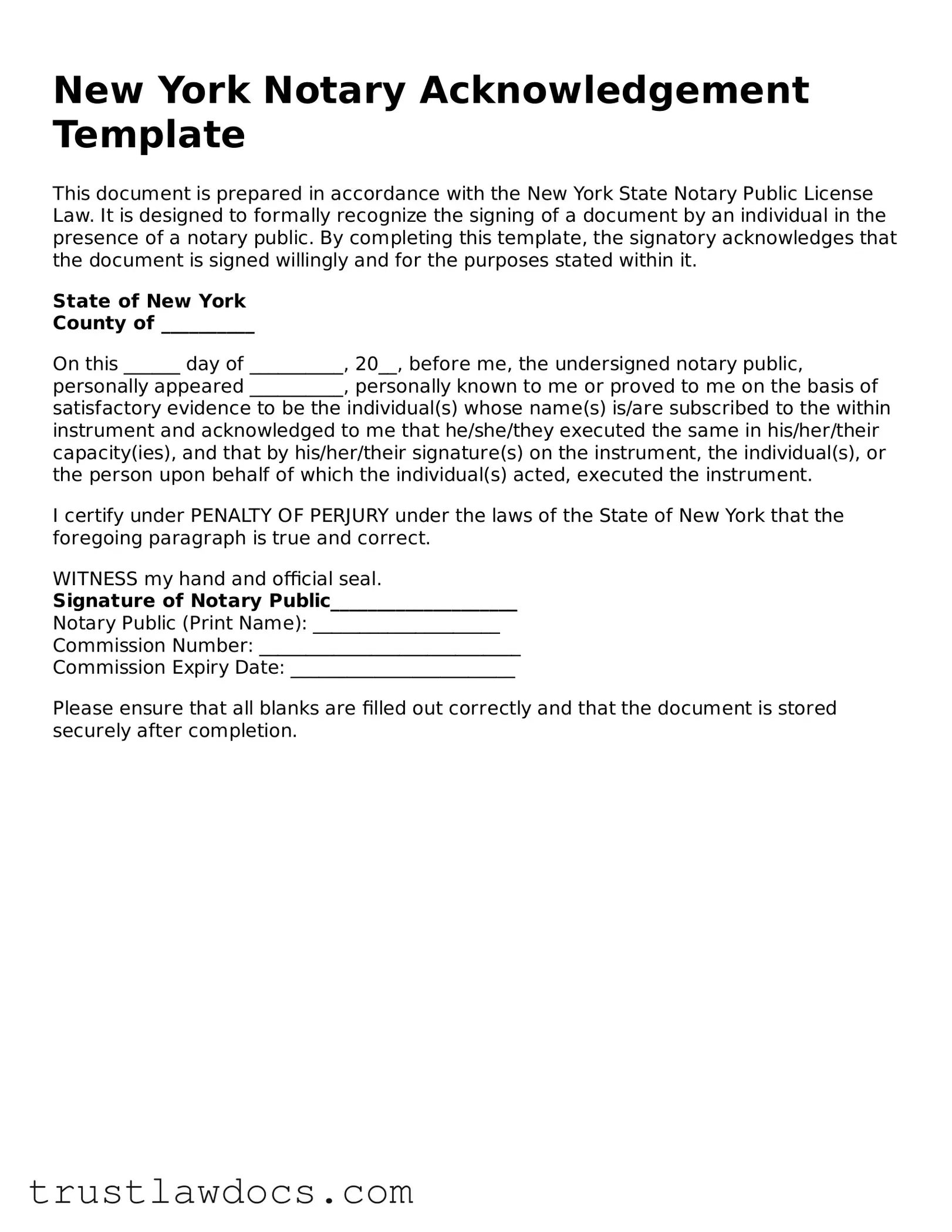One common mistake individuals make when filling out the New York Notary Acknowledgment form is neglecting to check for accuracy in the pre-printed sections. These areas, often overlooked, may contain outdated or incorrect information that can invalidate the document. Ensuring that the pre-printed sections accurately reflect the current data is essential for the document's validity.
Another frequent error is the failure to clearly print names and addresses. The form requires that all printed information be legible to avoid misinterpretation or delays in processing. Illegible writing not only complicates the notarization process but also might lead to legal misunderstandings or the need to redo the form entirely.
Many also mistakenly sign the document before presenting it to the notary. This oversight can lead to significant issues, as the purpose of a notary acknowledgment is for the notary to attest to witnessing the signature. If the document is signed out of the notary's presence, the notary cannot accurately perform this duty, rendering the acknowledgment void.
Forgetting to indicate the document date next to the signature is a subtle yet critical error. This date confirms when the signatory acknowledged the document before the notary, and its absence may raise questions about the document's timeliness and relevance.
Incorrectly identifying the capacity in which the signer is acting, if applicable, constitutes another common mistake. When a person signs on behalf of an organization or another individual, it's imperative to state their capacity clearly. Failure to do so may lead to confusion about the signer's authority and the document's legal standing.
Some individuals overlook the necessity of matching the name on the ID presented to the notary with the name on the document. This mistake can lead to the refusal of notarization since the notary must verify the identity of the signatory based on the name in the presented identification.
Omitting necessary information about the notarial act itself, such as the type of notarization performed, is a frequent oversight. Whether it's an acknowledgment, a jurat, or another type of notarial act, specifying the nature of the notarial service is crucial for legal clarity and record-keeping.
Not providing the notary with all required personal information for their records is another common error. This information often includes the signer's full name, address, type of identification presented, and the identification number and expiration date. This omission can invalidate the notarization if the notary’s record book does not contain complete entries.
Lastly, a significant error made by signers is assuming that all notaries are familiar with the New York Notary Acknowledgment form specifics. Notaries vary in their experience and familiarity with different forms. It is the responsibility of the person seeking notarization to understand the requirements and ensure the form is completed correctly before the notarial act.
